What is Nghinh Phong Tower?
Nghinh Phong Tower sits in a large coastal square in Tuy Hoa, right on the city’s beach promenade. The open space looks out over the sea, so you’ll always feel the breeze and have wide ocean views as a backdrop.
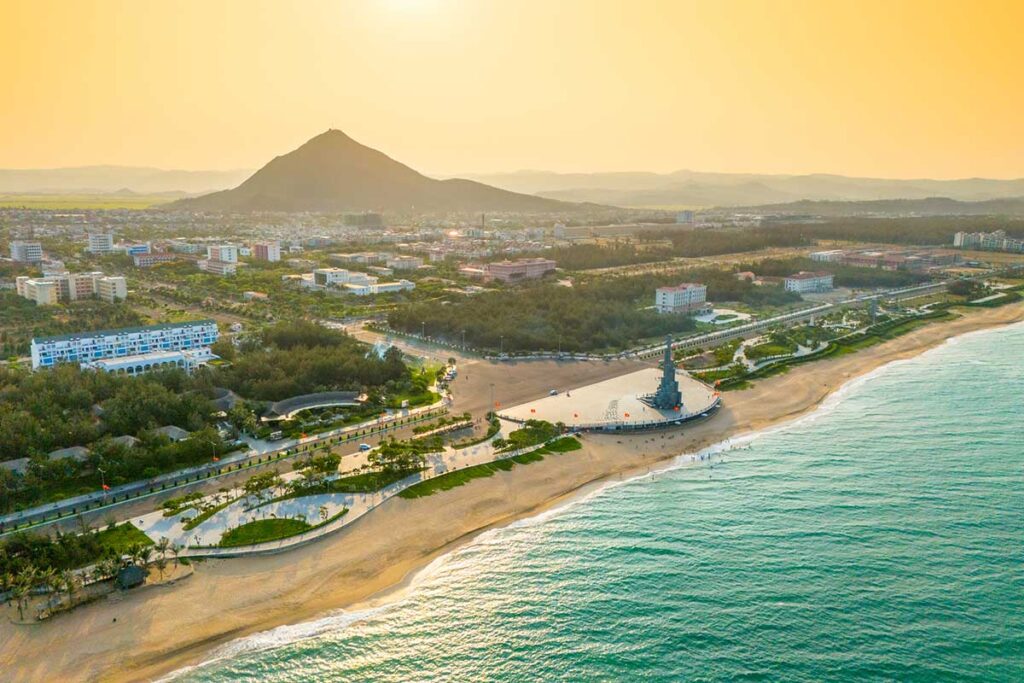
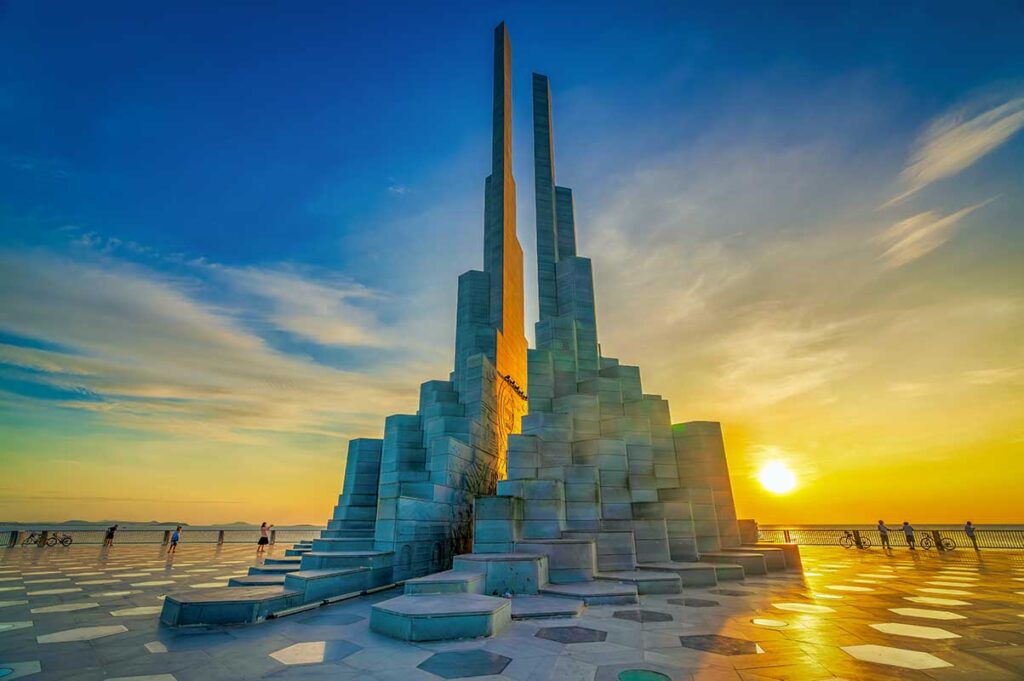
Built in 2021, the tower was designed as a modern cultural landmark and quickly became a new symbol of Phu Yen. Today it serves as both a gathering point for locals — from evening walks to public events — and a quick, photogenic stop for anyone exploring Tuy Hoa.
Architecture & What it Represents
The design of Nghinh Phong Tower draws from two sources deeply tied to Phu Yen’s identity: the basalt rock formations of Ganh Da Dia and the ancient legend of Lac Long Quan and Au Co. The structure is made up of two main towers — one 35 meters high representing Lac Long Quan (the father), and the other 30 meters high representing Au Co (the mother). At the base of each tower, 50 stacked stone blocks symbolize the hundred children from the legend, half who followed their father to the mountains and half who went with their mother to the sea.

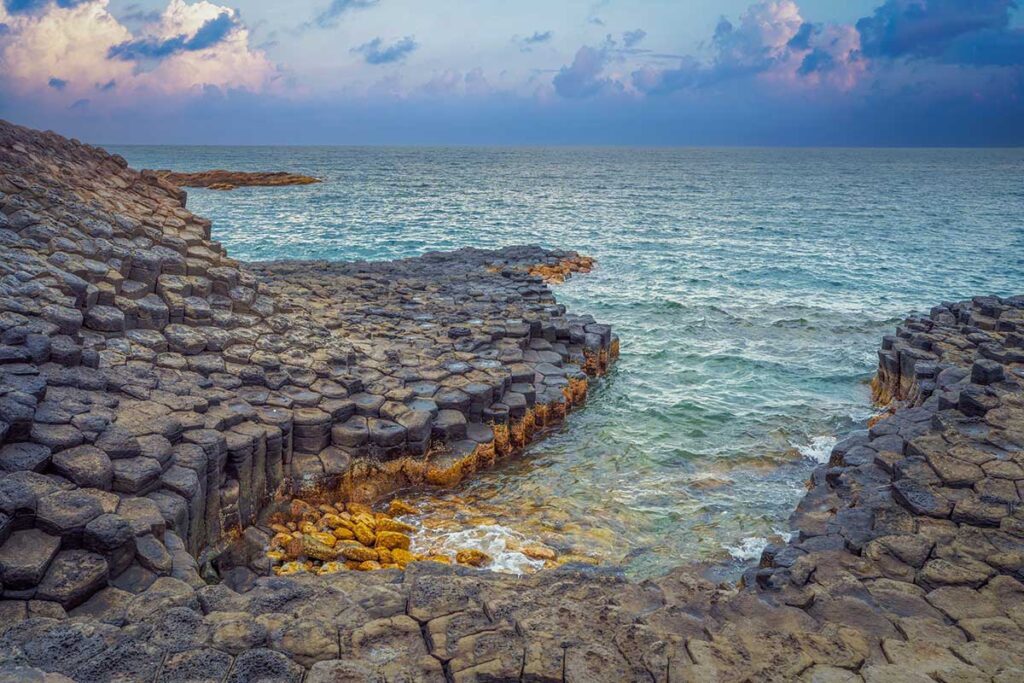
Look closely and you’ll see carved details that refer to Phu Yen as the “land of yellow flowers and green grass,” a poetic way locals describe their province. The entire monument is built from granite, a material abundant in the region and chosen to reflect the area’s “stone culture.” Between the two towers is a narrow wind gap that whistles when the sea breeze passes through, creating a kind of natural music that adds to the experience.
Since opening, the tower has gained international recognition, including the Asian Townscape Award and a World Travel Award, establishing it as more than just a local curiosity but a cultural landmark with wider significance.
Visiting Nghinh Phong Tower: What to Expect
A visit to Nghinh Phong Tower is straightforward. There isn’t a long list of activities here — the main draw is to see the monument itself, enjoy the coastal setting, and take some photos. Most people spend anywhere from 5 to 30 minutes at the tower before moving on, unless they combine it with a walk along the beach promenade or a meal in the nearby restaurants.
1. See the tower up close
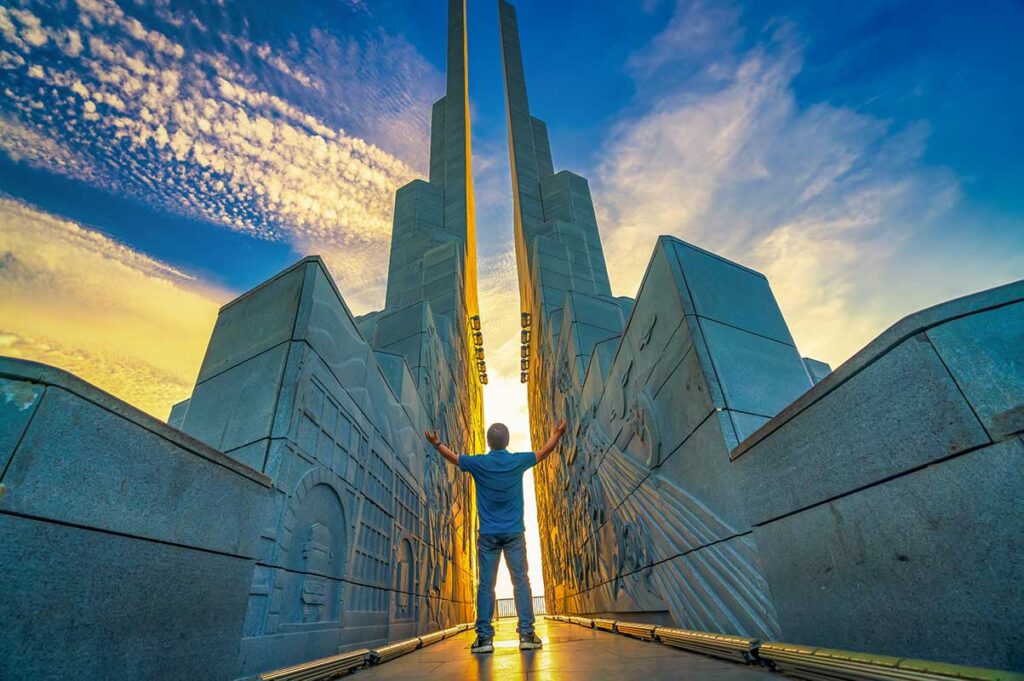
The main experience is simply walking around the structure and checking out the details. You can see the stacked stone design, the carvings at the base, and the sea as a backdrop. For many Vietnamese visitors this is a must-have “check-in” photo, but for international travellers it’s more likely of a short stop that gives a good feel for Tuy Hoa’s modern side.
2. Evening lights & atmosphere
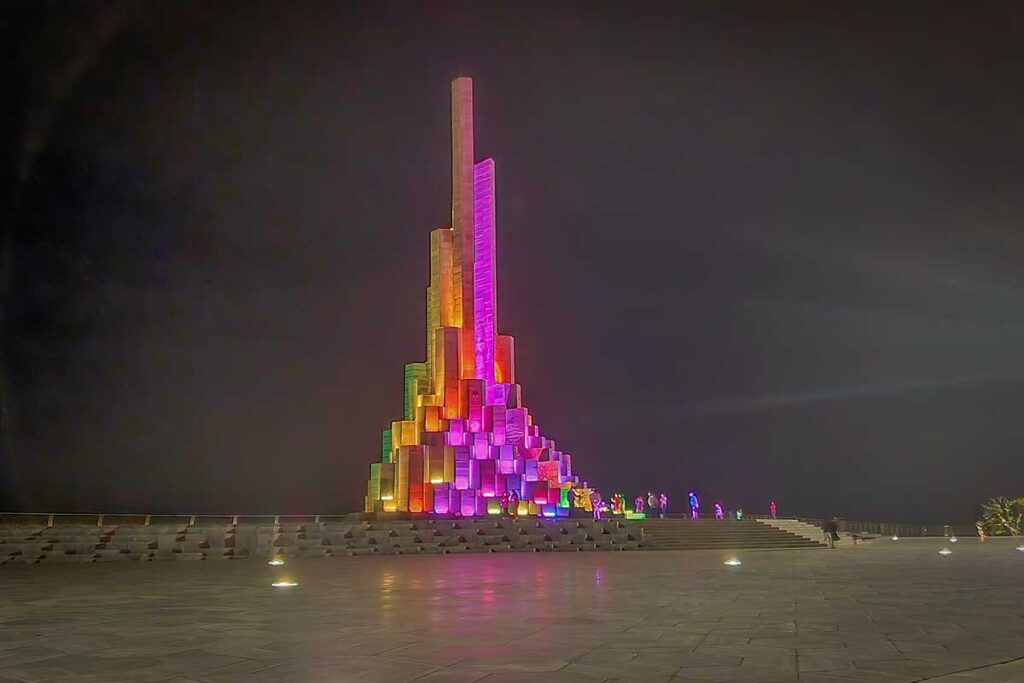
At night, the tower comes alive with lighting effects — a mix of 3D mapping, lasers, and colorful LEDs. This is the most popular time for locals, who gather here to stroll, exercise, or simply socialize in the cooler evening air. It’s best to pair your visit with an evening walk along the promenade, soaking in the lively but relaxed atmosphere.
3. Photography
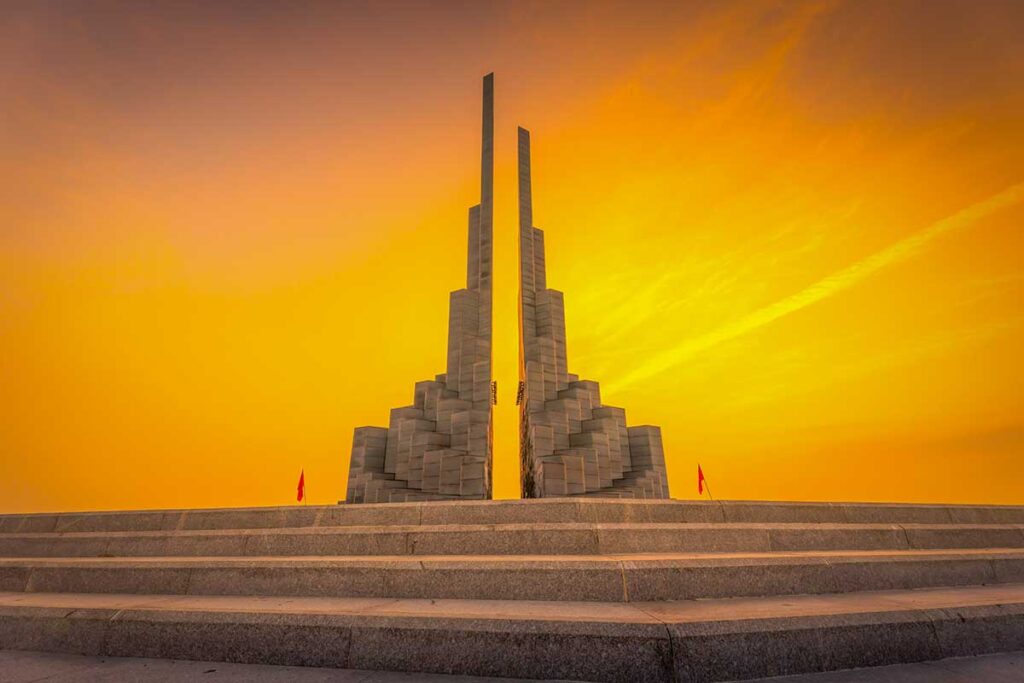
If you’re after good photos, sunrise and sunset give the most flattering natural light, while the evening adds the bonus of dramatic illumination. Popular angles include a front-on shot of both towers, standing in the wind gap, or low-angle shots that make the towers look even taller. Light clothing in white or blue contrasts well with the granite. If you’re using a phone, HDR mode or a wide-angle lens helps balance the sky and structure.
4. Beachfront cafés & restaurants
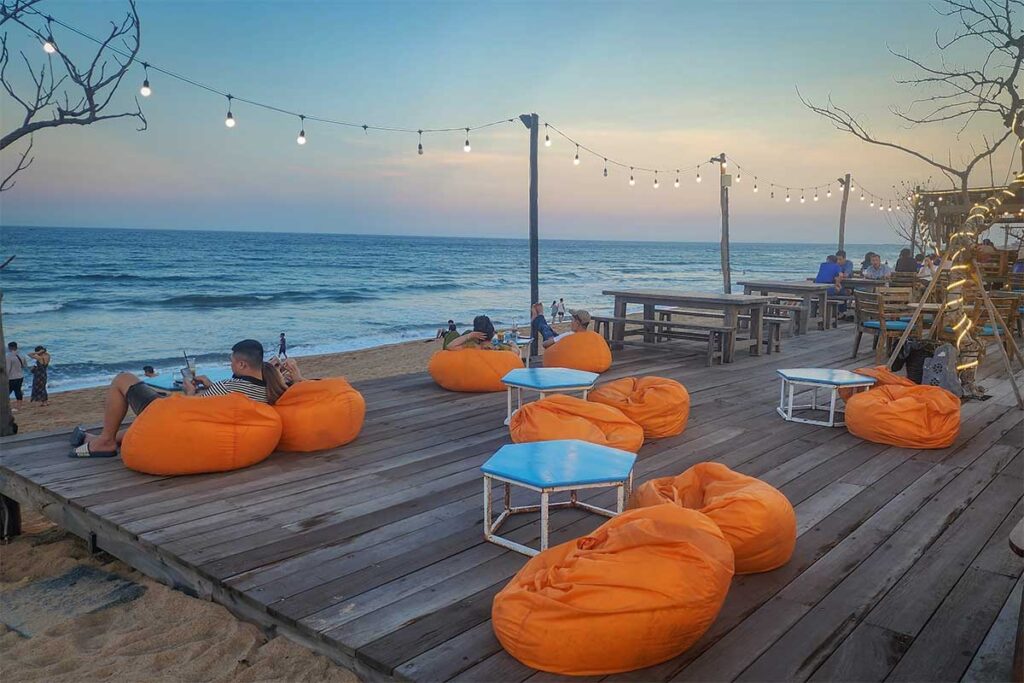

The tower sits right by Tuy Hoa’s seafront road, where you’ll find some of the city’s nicer restaurants and cafés. Prices are higher than the small local eateries, but the settings are pleasant and it’s a good spot to end your visit with dinner or a drink overlooking the ocean. Some resorts are also located along this stretch, making it easy to include the tower as part of a relaxed evening out.
Location & Getting there
Where is Nghinh Phong Tower?
Nghinh Phong Tower stands in Nghinh Phong Square, right on Tuy Hoa’s seafront in the city center. It’s only a couple of kilometers from most central hotels, making it easy to reach on foot, by motorbike, or by taxi. Tuy Hoa itself is your base: you can get here by domestic flight from Hanoi or Ho Chi Minh City, by train along the Reunification line, or by long-distance bus.

Taxi or ride-hailing
Taxis and Grab are easy to find in Tuy Hoa, and the ride to the tower is very short — about 5–10 minutes from the center. Returning is just as simple since the tower is in the middle of the city.
Car with driver
If you’re planning a day trip along the coast — for example to Da Dia Reef, Mui Dien Lighthouse, or O Loan Lagoon — a private car with driver is the most comfortable option. The driver will wait while you stop at the tower, so it’s easy to combine with other sights.
Renting a motorbike
Motorbikes are widely available for rent in Tuy Hoa and are the most flexible and budget-friendly way to get around. The ride to the tower is easy, with light city traffic and coastal breezes, though it can be quite windy along the sea road. Officially you need a valid license with an International Driving Permit for insurance to cover you, even if rental shops don’t usually ask.
Practical visiting information & Travel Tips
Entrance & costs
There’s no ticket or entrance fee — it’s a public monument open to everyone. If you arrive by motorbike, expect to pay a small parking fee of around 3,000 VND.
Best time to visit
The tower looks best in the softer light of sunrise and sunset, and the atmosphere in the evening with the lights on is the most lively. Midday tends to be hot, with harsh lighting and few people around, so it’s usually not worth planning a visit then.
Facilities & surroundings
The square itself is a wide, open space with little shade, so bring sun protection if you go during the day. Right behind the tower is the beach promenade, popular with locals for jogging and evening walks. A café sits underneath the square, though it isn’t always open late. Just across the road you’ll find some of Tuy Hoa’s nicer seaside restaurants and several mid-range to higher-end resorts.
Time needed
Most people spend between 5 and 30 minutes at the tower itself. If you add a stroll along the promenade or stop for a drink or dinner nearby, you can easily make it part of a relaxed evening.
What is nearby
From the square you’re within walking distance of Tuy Hoa’s beach and seafront road. A little farther afield, you can combine a visit with Thanh Luong Pagoda, Bai Xep beach, or even Da Dia Reef if you’re heading out for a coastal drive.
Other tips
- Expect a strong sea breeze in the evening — a light jacket can help if you get cold easily.
- Crowds gather in the mornings and evenings, and photographers sometimes block the central wind gap, so patience is useful.
- Litter can be an issue from vendors; choose your photo spot with care.
Is Nghinh Phong Tower worth visiting?
If you’re already in Tuy Hoa, then yes — Nghinh Phong Tower is worth a quick stop. It’s one of the rare modern monuments in Vietnam that actually connects well with local culture, and it makes for a good photo with the sea as a backdrop. That said, for foreign travelers it’s more of a short detour than a highlight you’d plan a trip around.
You’ll probably spend no more than half an hour here, unless you combine it with a walk along the promenade or dinner nearby. The tower is at its best in the evening, when locals gather to enjoy the cooler air and the lights switch on. Think of it as part of a relaxed evening out in Tuy Hoa or a convenient stop if you’re driving along Phu Yen’s scenic coast.



